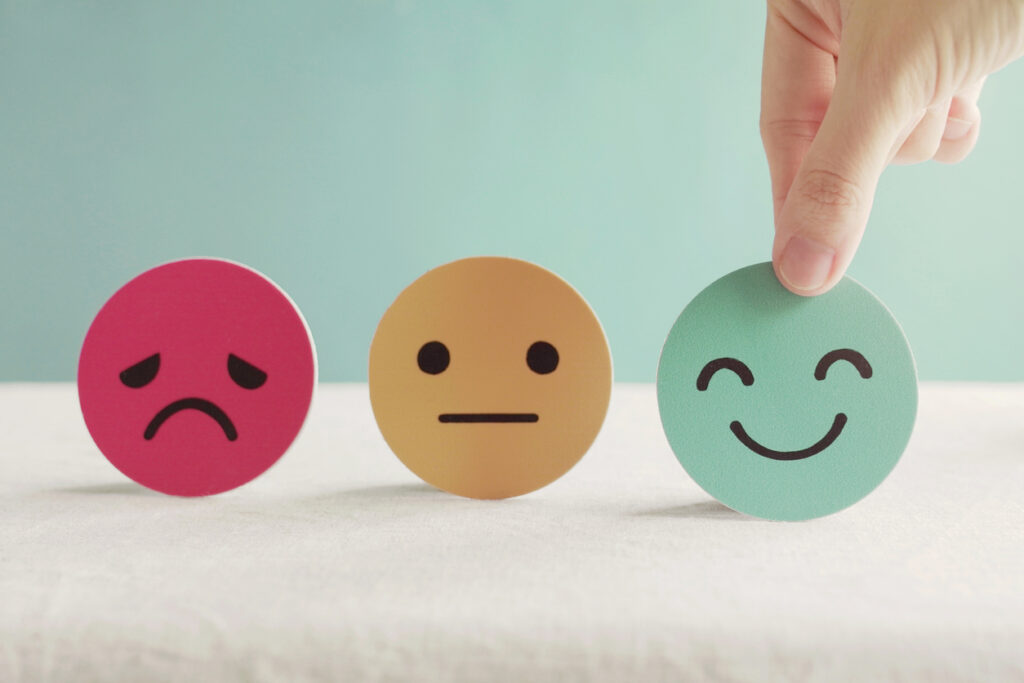
If you’re a parent, caregiver or toy buyer, you’ve probably heard people talking about MESH (Mental Emotional Social Health) toys. At The Toy Guy, we support these, and we’ve got some great ideas for you in this area. But first: a little caveat emptor advice designed to make you a better and more discriminating shopper.
Beware of Buzzwords
Once an idea or concept gains some level of traction in popular culture, marketers jump all over it. For better or worse, MESH is now in that category, so you’ll want to make sure the toys you choose really do help kids develop and refine skills. There are many amazing toys that do that, but not all of them.
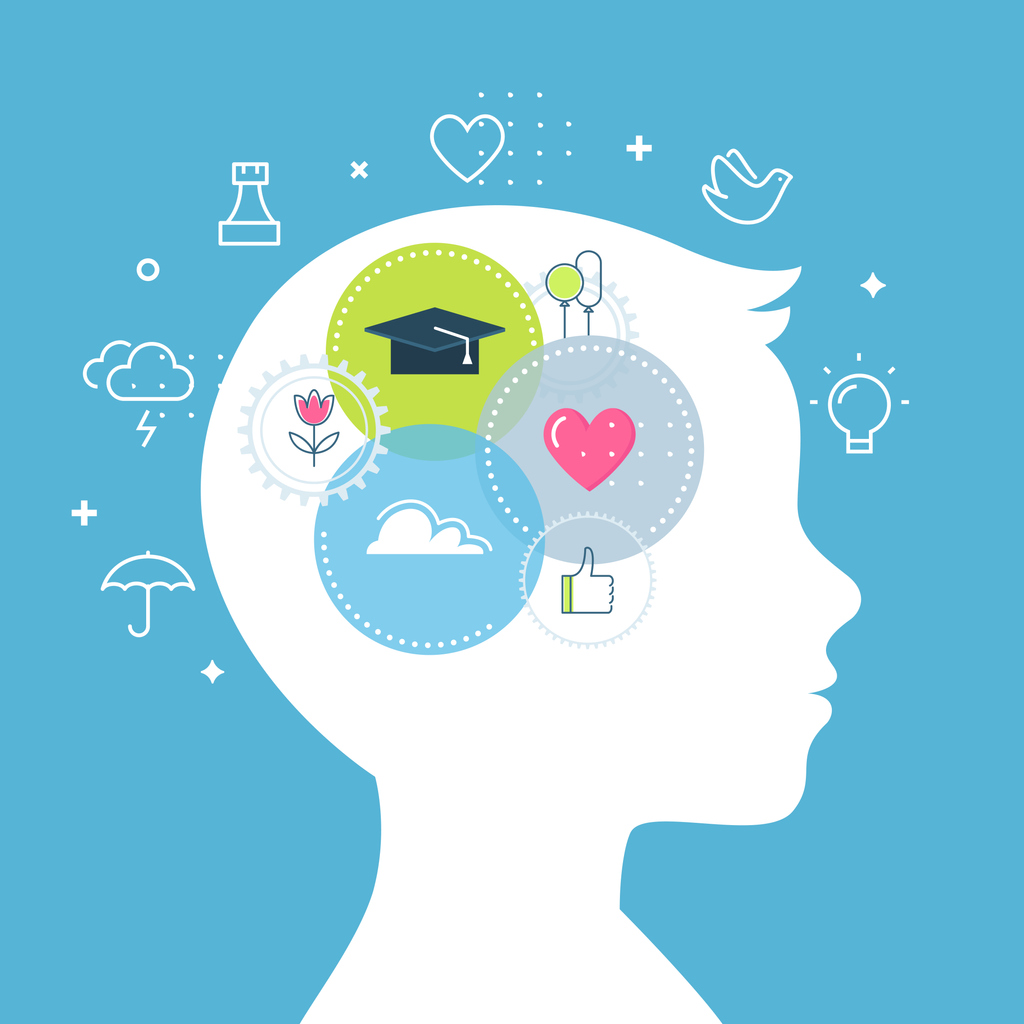
The same thing happened with STEAM toys. I think of the marketer who with a very straight face told me that a child pushing a truck teaches the child physics. It does not. Yes, the exertion of force on a stationary object may tend to make it move, which is a physics concept, but it’s a long way from the playroom floor to the AP classroom. Instead, by giving the child an experience, both physical and observational, they may develop the seeds of cognitive ability to understand a more advanced concept when it’s presented.
Similarly, throwing your brother’s favorite toy out the window does not teach a child about gravity. It teaches you how to make sure you get no dessert. (Not that I would know this from personal experience.)
When shopping for toys, always look beyond the buzzwords. Or put another way, when a concept is on fire in the culture, beware of people blowing smoke.
So, Let’s Talk About MESH
The good news is that most good toys have a quality of MESH to them. While not spoken of specifically, MESH concepts have been part of preschool curricula for a long time. Kindergarten has traditionally been designed to acclimate children to learning in a group and functioning among peers and all that entails, from effective communication to conflict resolution. Preschool is also when a child learns basic skills such as self-care, impulse regulation, and how to accommodate new lessons and information.

Because of the effects of the pandemic, many children did not have this experience. They were isolated with their families, seeing peers only on zoom, and, of course absorbing all the emotions of their parents around COVID-19. Elementary school teachers we’ve been talking to as kids prepare for the upcoming school year say that while kids may be ready to take on the curricula, in many cases they haven’t had the socialization that preschool provides, so the challenges teachers face are greater than whatever a typical year would be.
At the same time, current educational practice is much more comprehensive and reflective of children’s needs. Elementary school kids (as young humans) aren’t designed to sit at desks all day, and there is a growing understanding that if a child acts out, it’s not because they’re “bad kids” (as it was when I was growing up), it’s that they may be overwhelmed and need a time out. Thus, standing in the corner as a punishment has, in many cases, been replaced by going to the “calming corner.” That’s where a child can gather their senses, process what they’ve been experiencing, and give the brain and emotions a chance to regulate so they can begin to process experience in a healthy way.

It’s a wonderful thing. The growing acceptance of the fact that children are not “little adults,” means that they—and their behaviors—can be understood effectively within the context of their ages and cognitive development. Now, I also don’t want to create the impression that kids are a mass of neurosis or that a classroom is a trauma center. Different children respond to stimuli in different ways. What one kid may be able to take in stride may be upsetting to another. My father who was a school administrator and middle school teacher for much of his career always advocated an individual approach to each child based on their needs.
Toys That Reinforce MESH Concepts
Let’s start from the premise that for any toy to be effective at helping kids build skills it has to be fun and engaging. If it’s not, the kid just won’t spend time with it. As a parent, part of your job is to understand your child’s unique play style and their play needs, just as you would for nutrition or any other essential aspect of a child’s life.
We’ve assembled a list of some of toys organized around the potential MESH benefit. Bear in mind that these are not recommended as therapeutic items, and children who are experiencing challenges should be evaluated by a professional. However, we also don’t want to minimize the role of play in helping children to process daily experience, including emotions.
At The Toy Guy, we are strong believers in the work of the constructivists which stresses experiential learning, assimilation, and adaptation. This is the work first explored by John Dewey and later by Jean Piaget. (There’s lots online you can read about this, should you be interested.) They outline how learning occurs for children as they develop.
Following are some of the new toys we’ve been working with that provide experiences which may encourage kids to develop MESH concepts in their lives, organized by potential benefit.
Cuddling and Comfort
The appropriate formal term for this is “self-regulation,” but we like cuddling because, well, it’s nice. When things get to be a little much, who doesn’t love a little hug? Stuffed animals have filled this role for kids for years. Charles Dickens in Bleak House writes about Esther Summerson talking to her doll as a means of processing emotions. It’s a classic tool kids use a their emotional lives develop, Here are two new items we think are especially good:
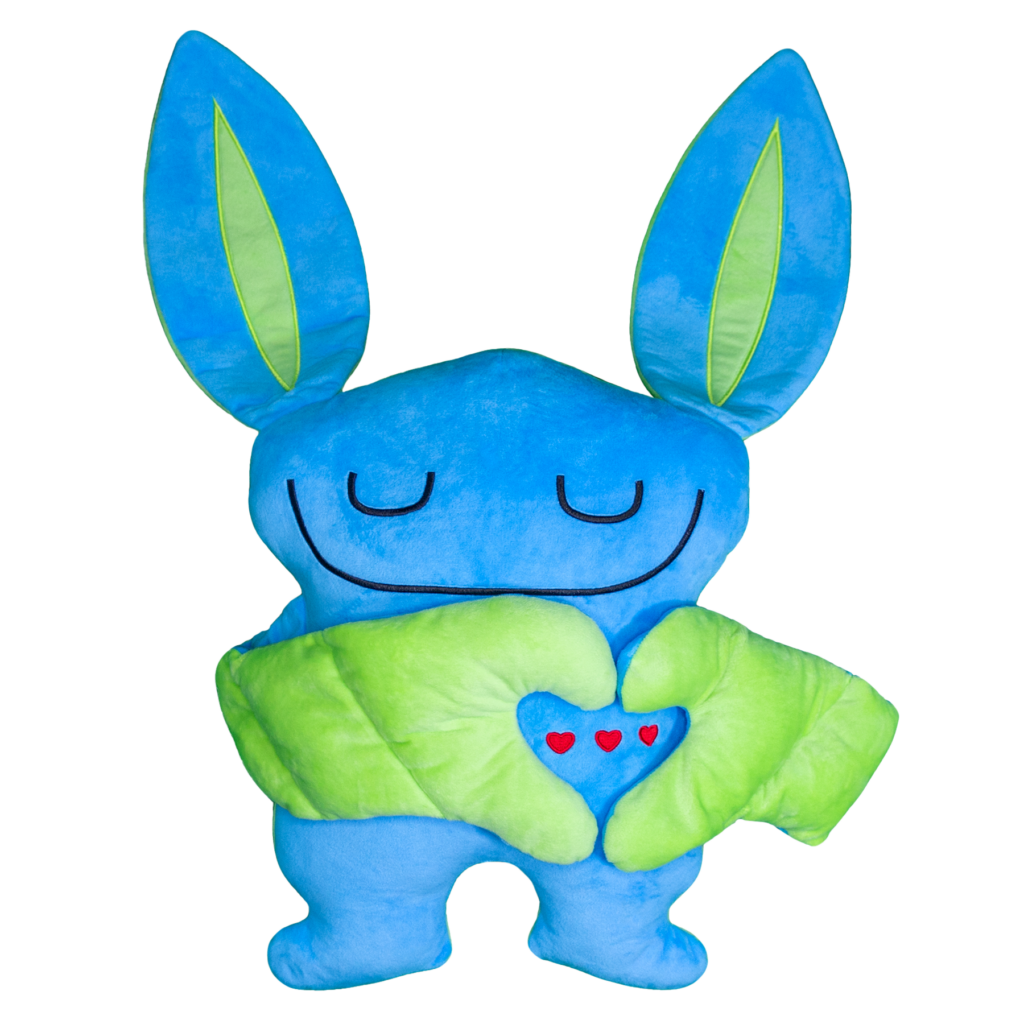
Bumpas from Good Soul Brands
Ages 3 and up$34.99
Where to Buy
These are weighted plush toys designed to give a child (or anyone) a reassuring, calming hug. The characters have a unique look and weigh approximately three pounds. The long arms can be draped over your shoulders, and the peaceful smile is adorable. Like popular weighted blankets, Bumpas stimulate a deep pressure sensation that can help calm stress and anxiety. They’re great any time you need a hug, and they’re very comforting to sleep with, too.

Snoozimals from Go Toys and Games
All ages
$24.99
Where to Buy
These are the softest, huggiest, stuffed toys we’ve seen in a while. There are nearly 20 in the collection, and they’re about 20-inches long, which means a kid can give them a really big hug. Whether sitting and feeling the comfort or as the perfect take-to-bed pal, these big best friends will charm and delight kids. They’re also the newest plush collectible, and we think kids are going to want an entire menagerie to love. We’re partial to Lola the Axoloti, Oliver the Corgi, and Flash the Sloth, but you’ll be able to find your favorites…with more to come.
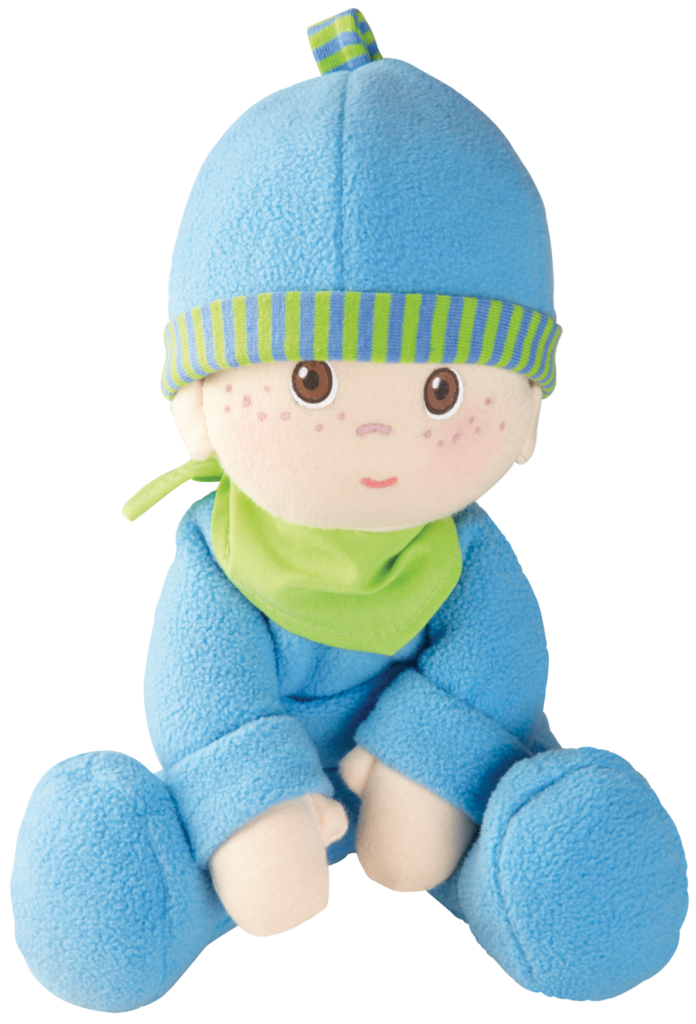
Snug Up Dolls from HABA
All ages
$19.99
Where to Buy
These sweet baby dolls—Luis and Luisa—are 8-inches tall, super soft and soothing. Sometimes kids want to practice nurturing, too, as a way of understanding the care they receive and reflecting it in their play. These charming dolls are ideal for that kind of play, not to mention being a classic baby doll that’s likely to become a child’s favorite. And, not incidentally, both boys and girls need this type of play.
Manipulatives aka Fidget Toys
Toys that keep the hands busy have been shown to have a calming effect on anyone. What teachers and toymakers call “manipulatives” help release chemicals in the blood stream that help to balance levels of dopamine and norepinephrine. That’s a highly technical explanation, but it really does work. It also changes focus so, for example, if a child is focusing on a stress inducer, the play redirects the brain and has a calming effect. But enough with the technical stuff, let’s have some fun:
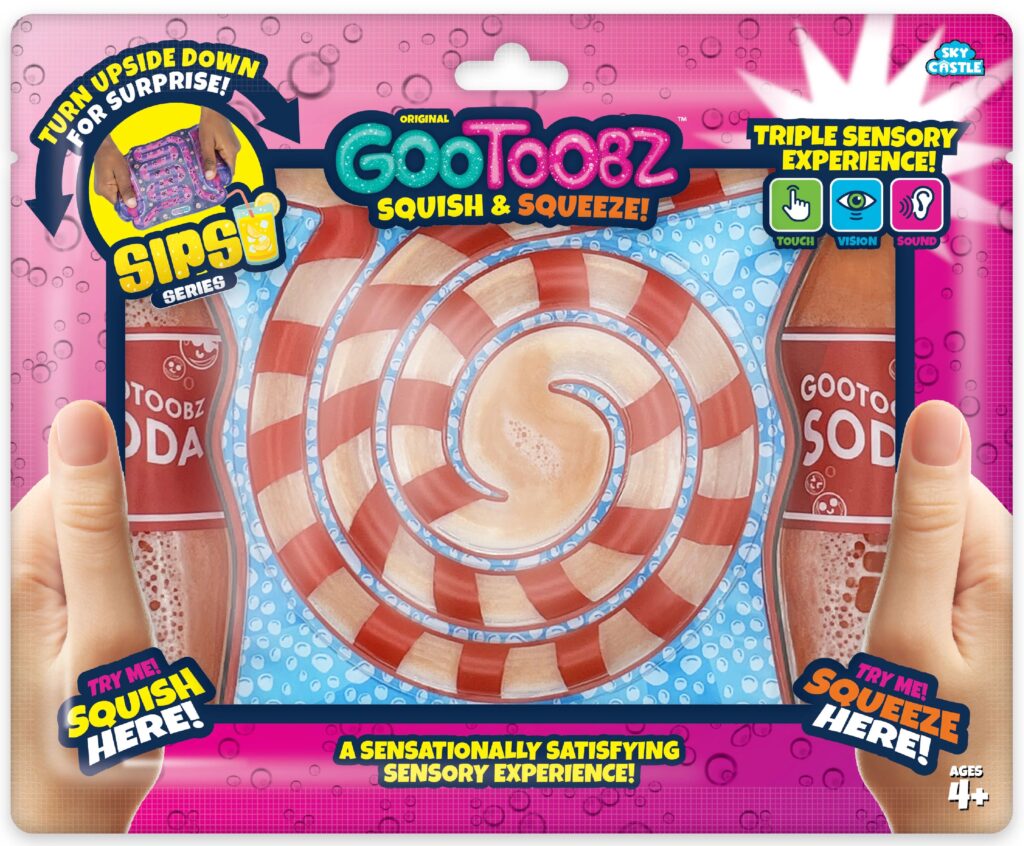
GooToobz SIPS from Sky Castle Toys
For ages 4 and up
$9.99
Where to Buy
Once you pick these up, they’re kind of hard to put down. The squishy fun is almost hypnotic…in a good way. You can feel the goo run through the tubes, hear it gurgle, and watch as it flows. Seriously, you can squish your troubles away. The original GooToobz were a big hit, and now they’ve been reimagined as drinks—Bubble Tea, Milk Shake, and Soda Pop. They’re also easy to clean and perfectly sized for take-along play.
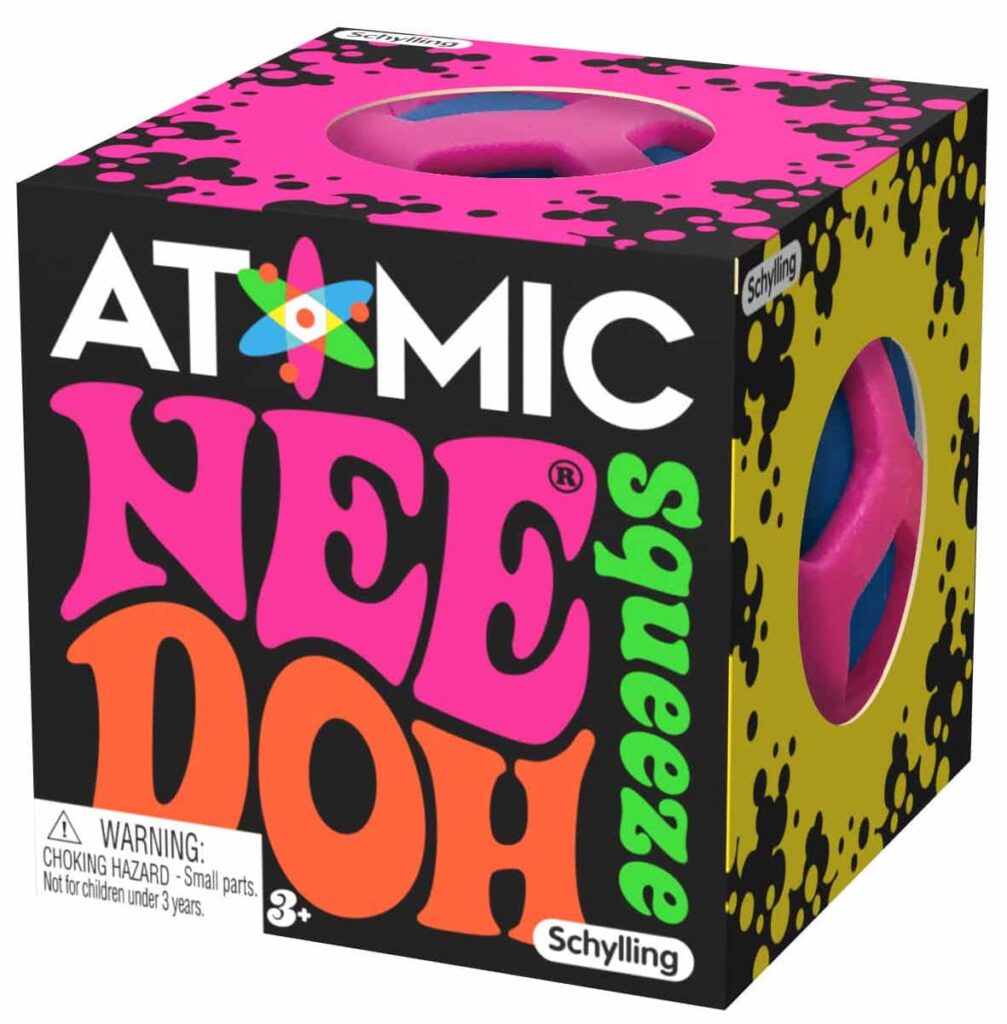
NeeDoh Atomic and Nice Cube from Schylling
For ages 3 and up
$3.99
Where to Buy
The classic stress ball gets a fun makeover. NeeDoh Atomic and Nice Cube are just two of the many products in this line. When you squeeze the Atomic, the insides pop out through the openings, which is silly and ever changing. The Nice Cube is perfect for those break-the-glass moments of high stress because it’s a bit heavier and more resistant. You really have to squeeze it. The translucent cube always comes back to its original shape. Kids will love them, but we have to admit, we like to keep them close at hand as well.
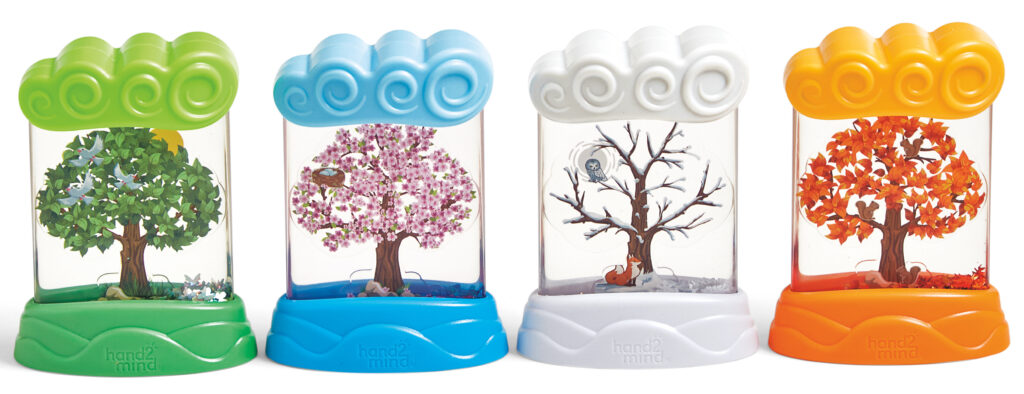
Changing Seasons Sensory Tubes from hand2mind
For ages 3 and up
$24.99
Where to Buy
The play is all about calming, captivating sensory experience that reflects the seasons of the year. The seasons are color-coded with natural elements including plants, animals, sun, and snow. The water-filled toys are activated by pushing buttons, and kids can watch and see how they can affect what’s happening inside each toy.
Mindfulness
These toys have elements in common with the manipulatives, but the idea is a bit different. The idea is to slow down and concentrate and just do one thing. It’s the opposite of multi-tasking where your attention keeps switching between tasks. In addition to being calming, mindfulness also helps develop focus and concentration.
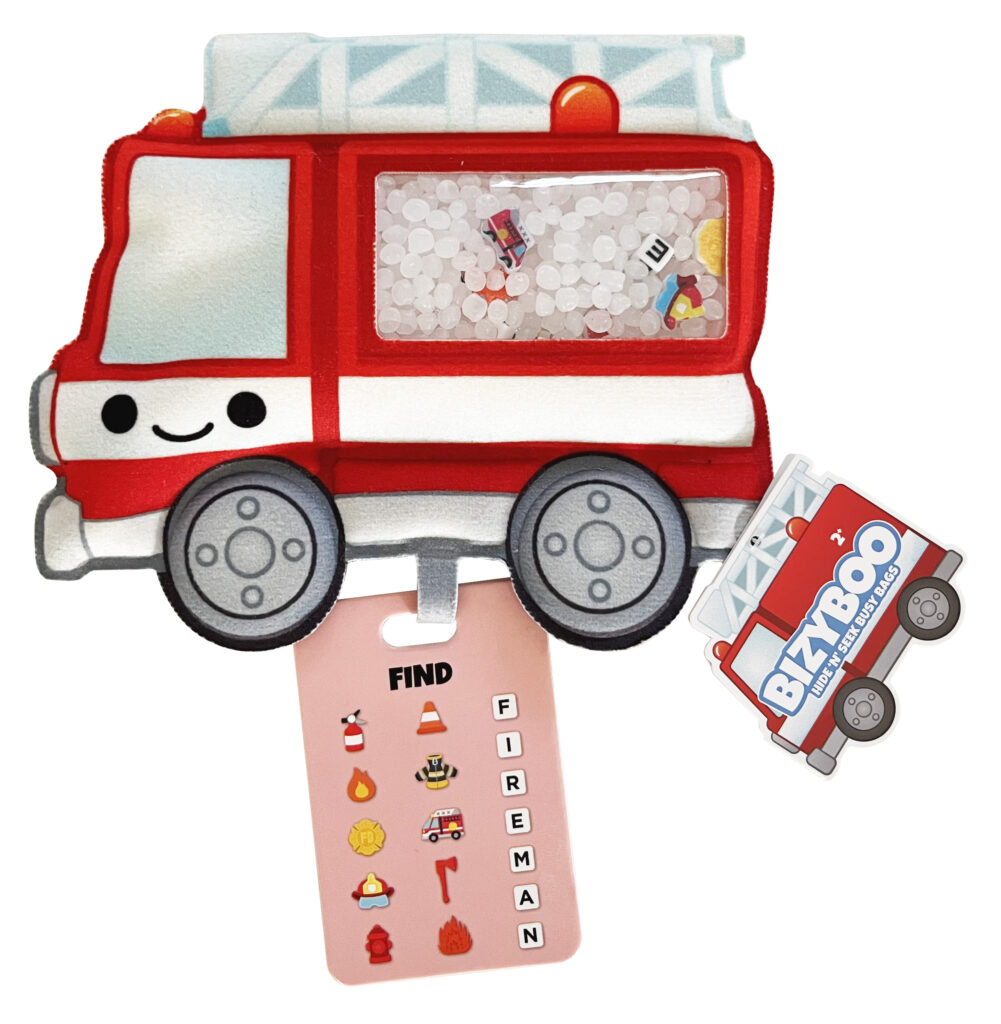
Bizyboo Hide ‘N’ Seek Busy Bags from Vango
For ages 2 and up
$8.97
Where to Buy
You might consider these first mindful toys for little ones. Each Bizyboo is a felt-like bag filled with beads and 17 different themed objects to find. Kids push the beads around as they search for the objects hidden inside. An attached card includes the objects to find, which adds to the play. They’re mess-free and completely portable. And don’t be surprised if grownups find these relaxing as well. The Bizyboo was inspired by homemade busy bags shared on social media.
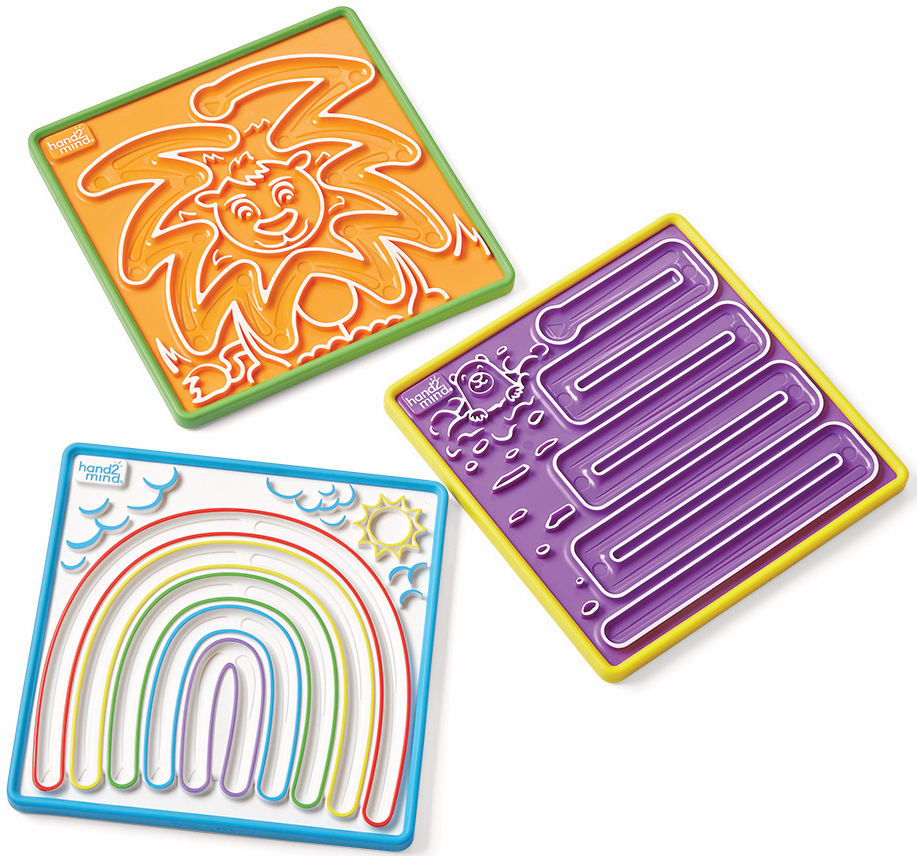
Mindful Mazes and Mindful Mazes Garden Pack from hand2mind
For ages 3 and up
$14.99 and $21.99
Where to Buy
We loved these when we first discovered them earlier this year. The double-sided mazes are just the right size for a child’s finger. The idea is that the child traces the shapes while breathing in and out. It’s almost meditative, which is a proven tool for mindfulness and calming. Inspired by the adult practice of walking a labyrinth while breathing and entering a meditative state, these mazes really do work to slow active minds, calm emotions, and steady breathing. It’s a great practice that will serve kids (or anyone) well as they get older. Each set comes with a terrific guide to inform parents and caregivers so they can help children get the maximum benefit from this practice.
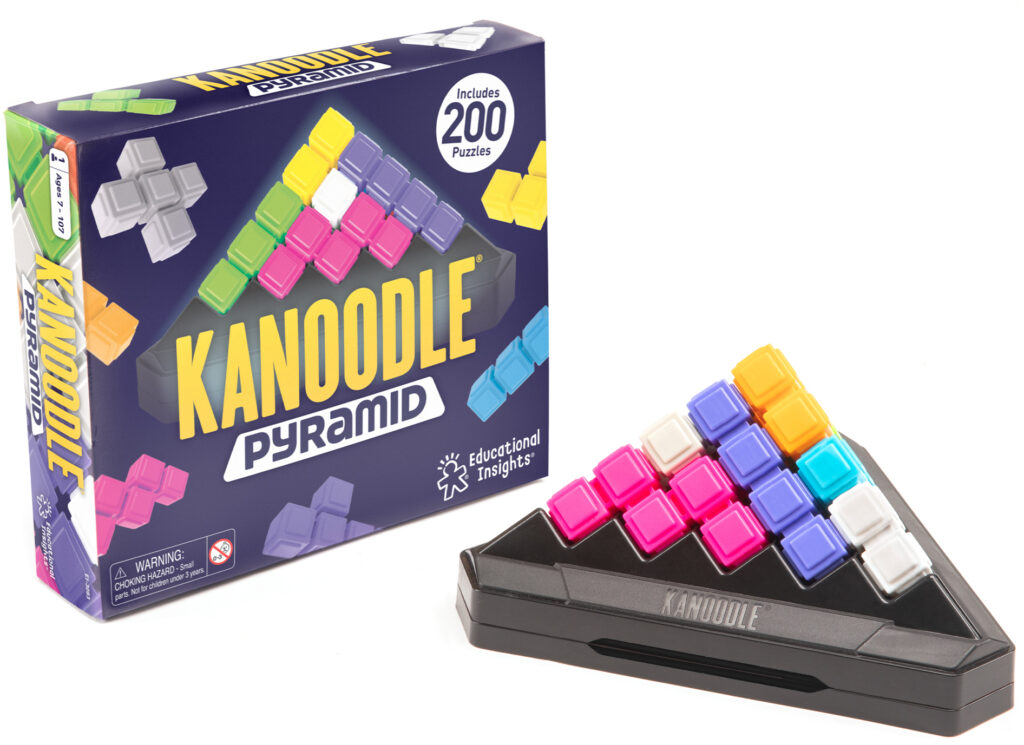
Kanoodle Pyramid from Educational Insights
For ages 7 and up
$24.99
Where to Buy
Puzzle fans just think they’re fun, but puzzles are also one of the original mindfulness toys. No wonder they were so popular when people were locked down during the pandemic. Inspired by the craze for the original Kanoodle, which became a surprise TikTok hit, this puzzle can be played solo or with friends. And in addition to mindfulness, it also provides experiences in problem-solving and critical thinking. Select a puzzle from the booklet and try to place the pieces to match it. There is only one right solution, though possible combinations abound.
Communication
A key element of MESH success is communication. Learning to do this effectively from an early age is beneficial for interpersonal relationships, writing, imagination, and much more. Communication goes beyond just intellectual capability however. Learning to identify and communicate emotions is key to emotional health. Board games, card games, and any chance to interact with other people is a great way to practice, and we’ve also found two products that are fun conversation starters.
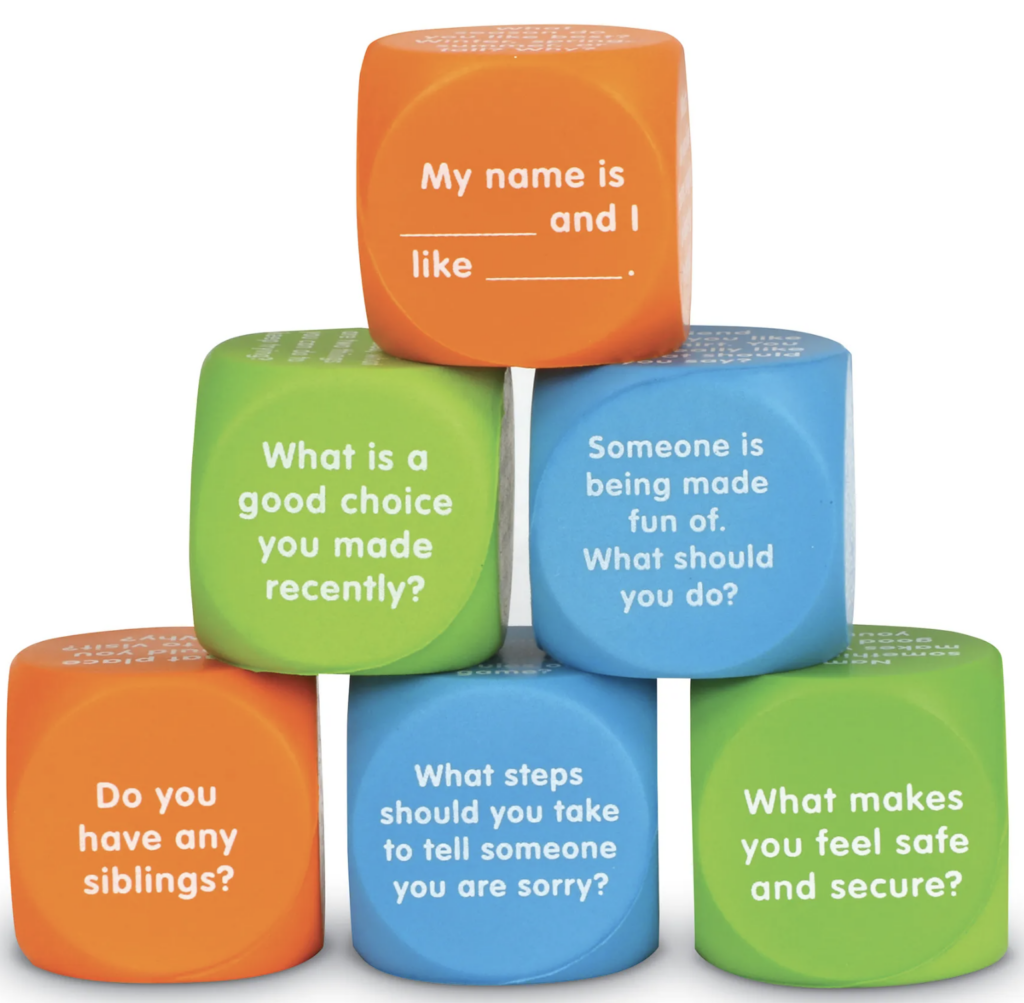
Let’s Talk Cubes from Learning Resources
For ages 5 and up
$14.99
Where to Buy
Sometimes the hardest part of getting a conversation going is starting out. Well, the six, foam cubes in this set are just the answer. Pick a cube, roll it like a die, and then use the text that lands face up to start the conversational cube rolling. There are three different categories: Ice Breakers get kids talking about themselves. Social Skill have critical thinking questions to get kids to talk about responding to situations, and Emotional/Feeling Prompts are more open-ended to get kids talking about their responses to the world around them. An activity guide shows you how to play.

Emotional Support Fries from What Do Meme?
For all ages
$16.99
Where to Buy
We absolutely love the whimsy of these. It’s a lighthearted way to deal with an important set of lessons—understanding and communicating feelings. The six plush fries let kids show they’re feeling happy, sad, angry, surprised, or affectionate. Play a game with picking a fry to identify the mood.
This is a topic that we’re pretty sure will be top-of-mind for a while. Keep checking back here as we update this list as more products are introduced!
DISCLOSURE: PURCHASE LINKS ARE TO PLACES THAT HAD IN-STOCK AVAILABILITY AT THE TIME OF PUBLICATION. THE TOY GUY DOES NOT RECEIVE ANY COMMISSION OR FEES IF YOU PURCHASE THROUGH THOSE LINKS. WE DEFINITELY RECOMMEND SHOPPING AROUND. PRICES LISTED HERE ARE MANUFACTURER’S SUGGESTED RETAIL PRICES. IN SOME CASES, PRICES MAY VARY.


These toys are really good.